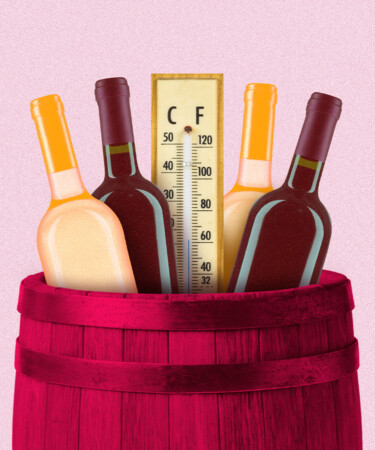Starting a wine collection of your own can provide you with an assortment of great bottles. Once your collection begins growing, you’ll need to ensure that you’re storing your wines properly — and that involves the use of a cellar-like room or a wine refrigerator. No matter which method you choose, the question of whether red and white wines should be stored together or separately is bound to arise.
To learn more about how red and white wines should be stored, VinePair spoke with sommelier, wine journalist, and frequent contributor Stephanie Cain.
The Benefits of a Cellar or Wine Refrigerator
No matter what type of wine you’re storing, it’s important to know the three basic elements that make for a good storage location: the space should be cool, dark with little to no light, and temperature regulated. “I actually read a fun stat that wine ages four times faster at room temperature,” Cain says. So, if you’re serious about your wines and want to cellar special bottles for years, then it’s worth considering investing in a wine refrigerator.
Despite the convenience of your kitchen, wine bottles should not be stored in standard refrigerators or on countertops near the stove for long periods of time. “Cellars and wine refrigerators are both designed to keep wines in an optimal environment, including the right amount of humidity which prevents premature oxidation,” Cain says. These factors are crucial in prolonging a wine’s quality and ensuring optimal aging.
Red Vs. White Wine
“Red wine should be served around 60 to 65 degrees, while whites, rosé, and sparkling should be served between 40 and 50 degrees,” Cain says. It’s easy to assume that since reds and whites are served at varying temperatures, they should also be aged at different temperatures.
But when it comes to storage, those temperatures are a bit closer to each other; Cain suggests keeping both red and white wine at cellar temperature, which is customarily around 54 degrees. That means aging different styles alongside one another is a relatively typical practice among collectors.
Some wine refrigerators are available with dual temperature zones. However, the split sections can often fit fewer bottles, meaning less storage space than single-temperature options. If you do choose to invest in a wine refrigerator with separate sections, Cain suggests using it during events of constant service like dinner parties, as opposed to long-term storage.
But for most homes and small apartments, storage space is limited. “If you live in NYC like me, space efficiency matters,” Cain says. “Since both red and white wine do just fine together, a single-zone wine refrigerator works best.”
